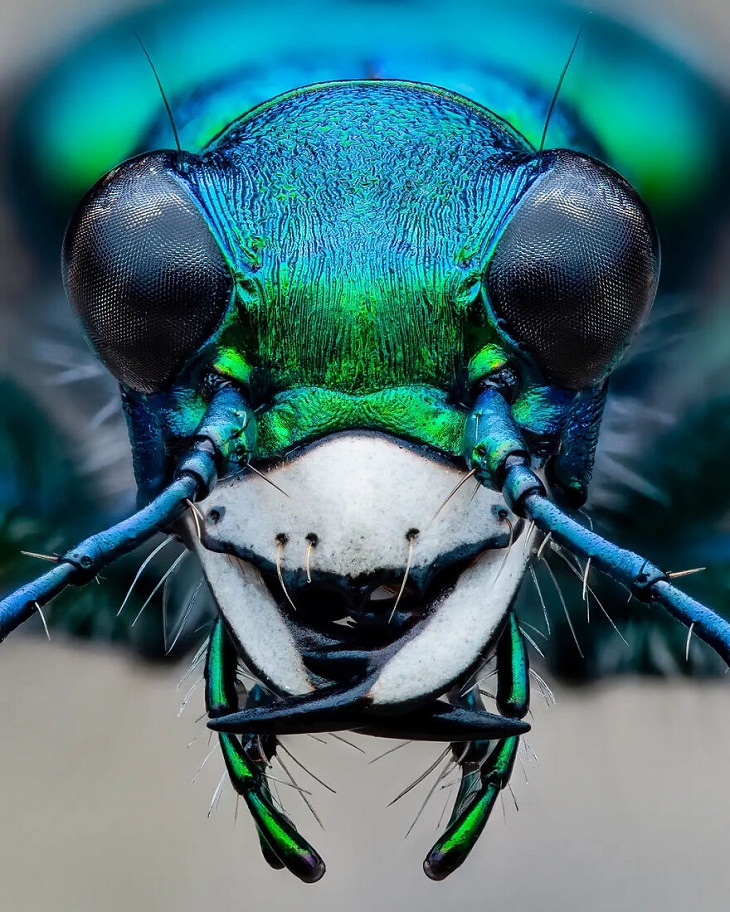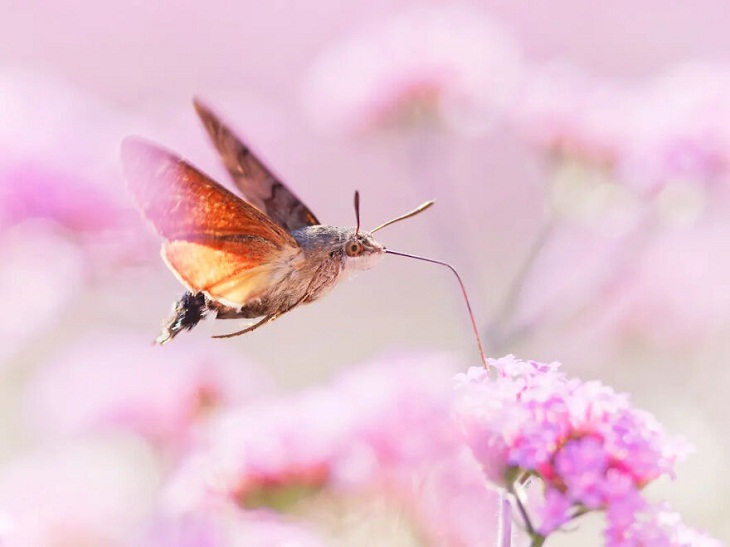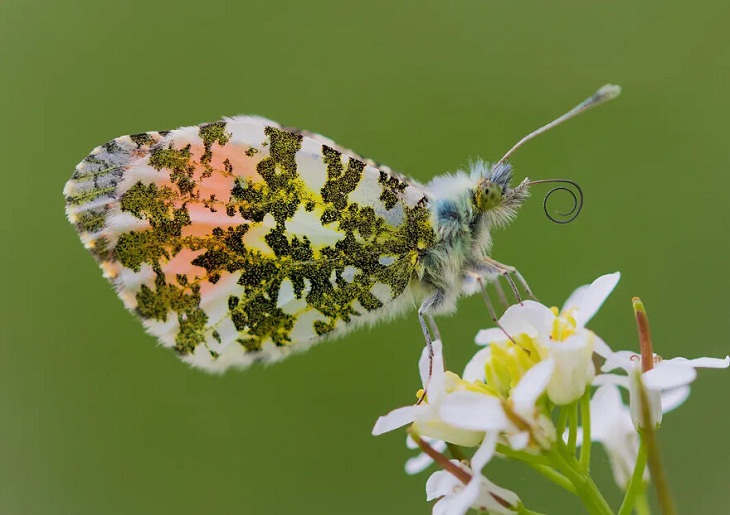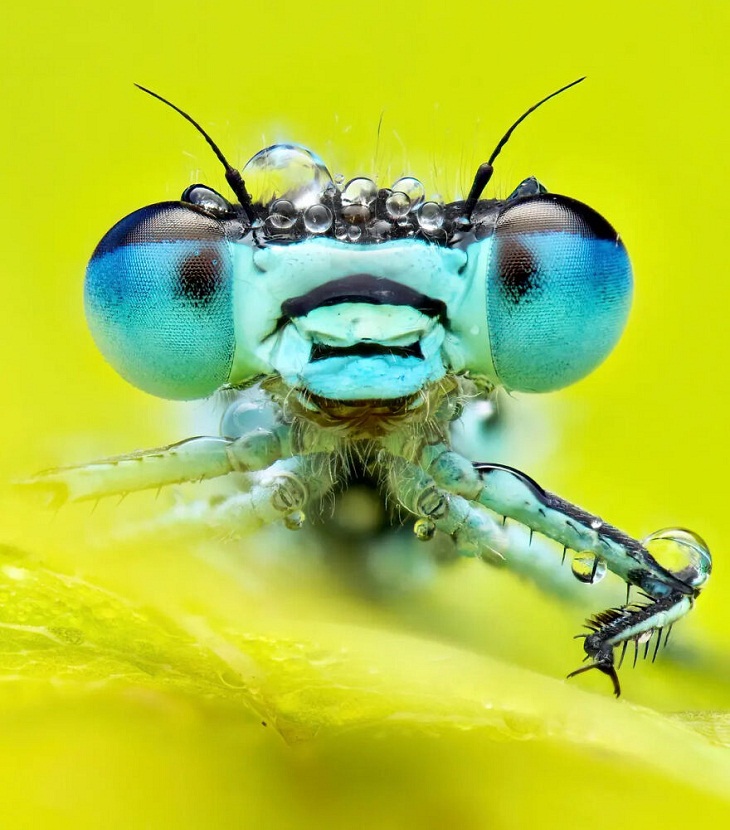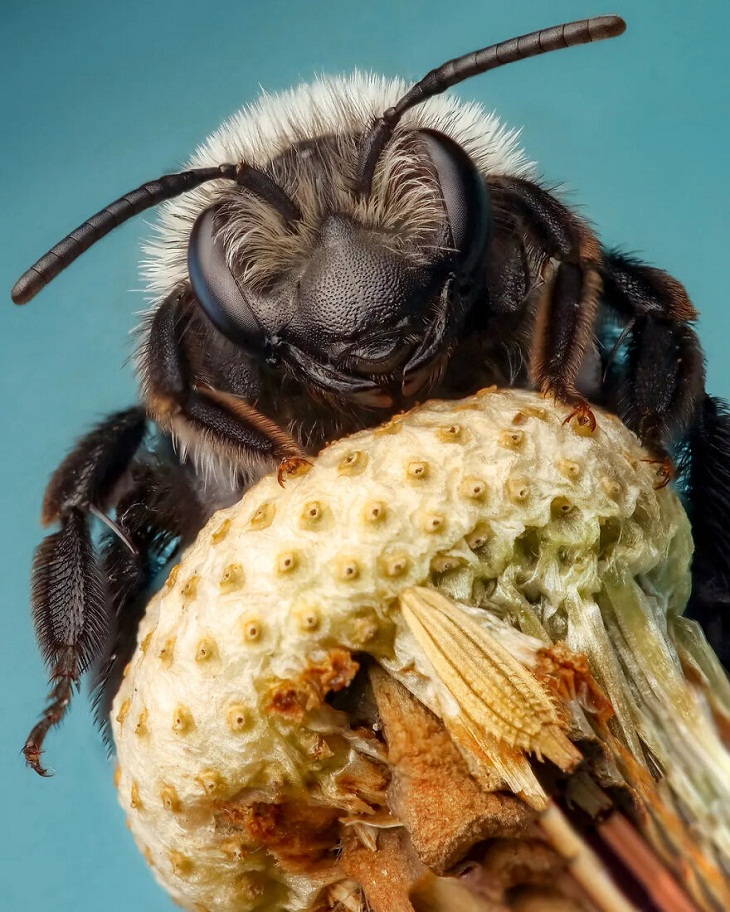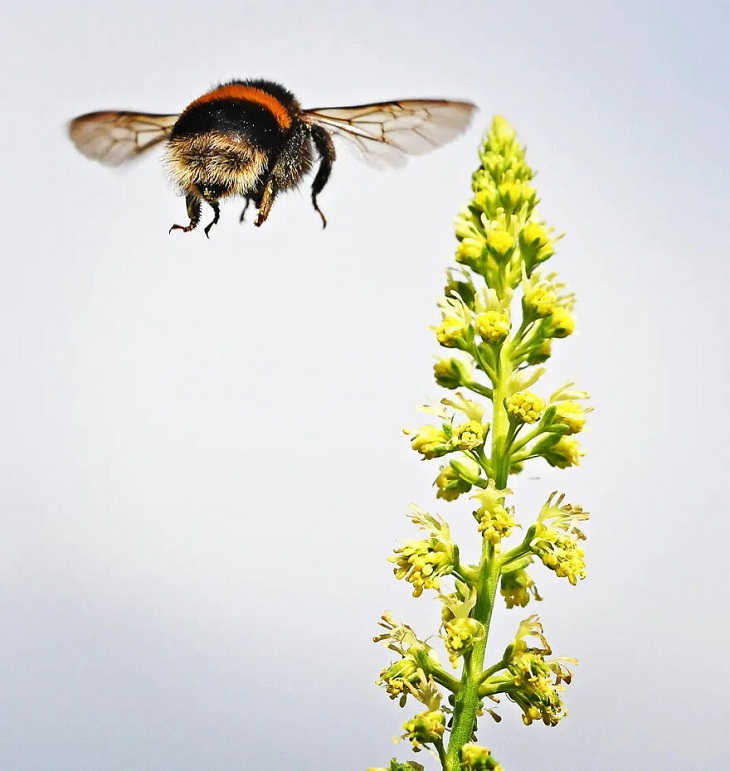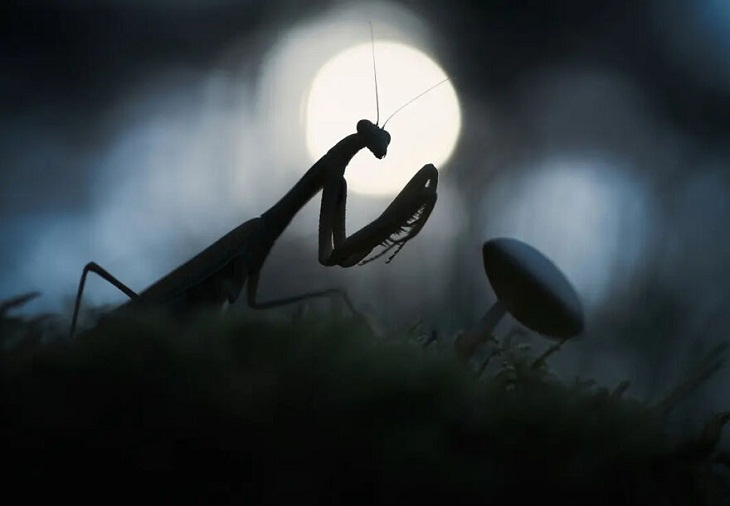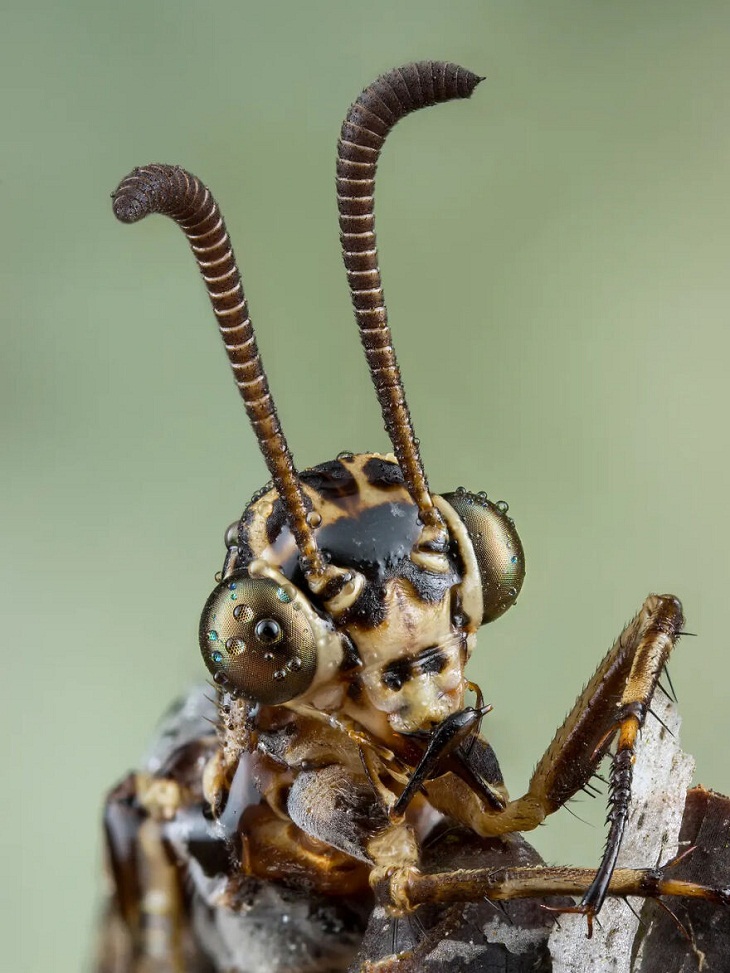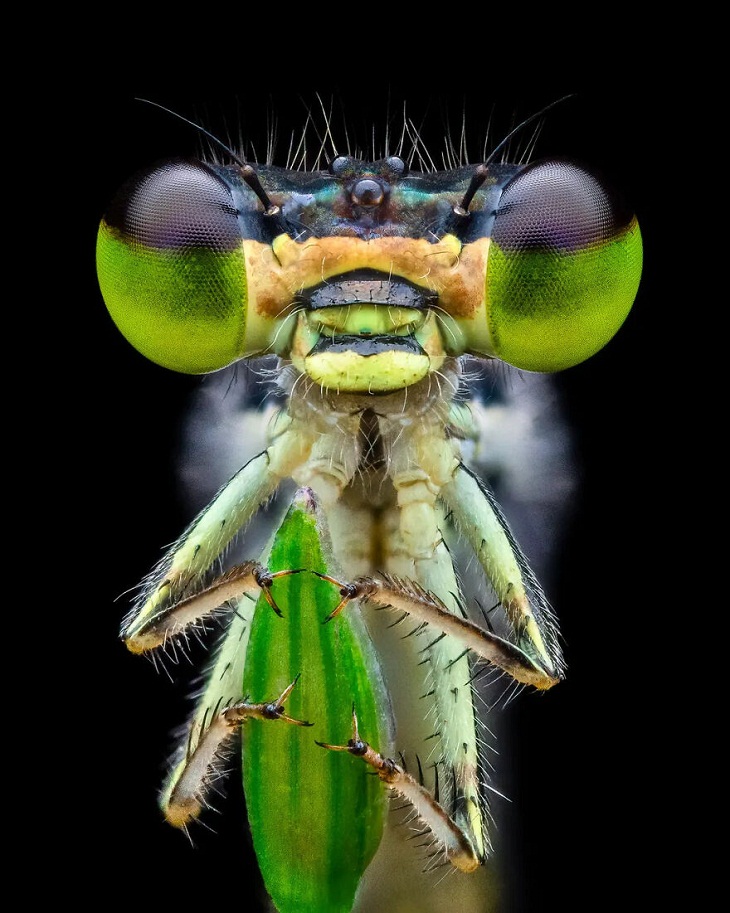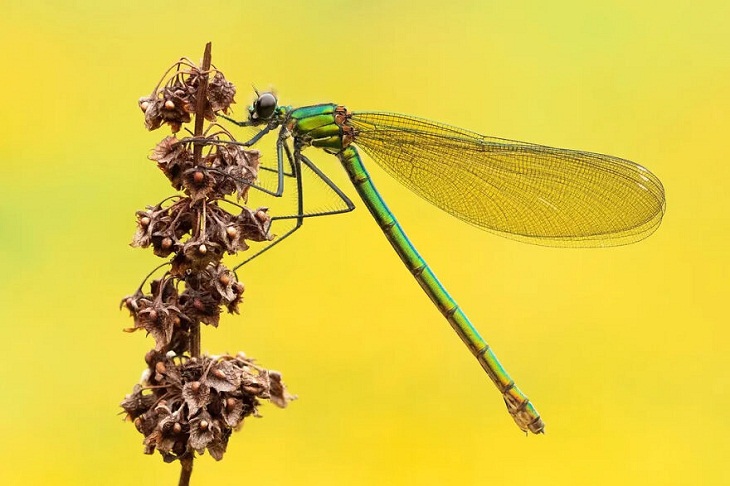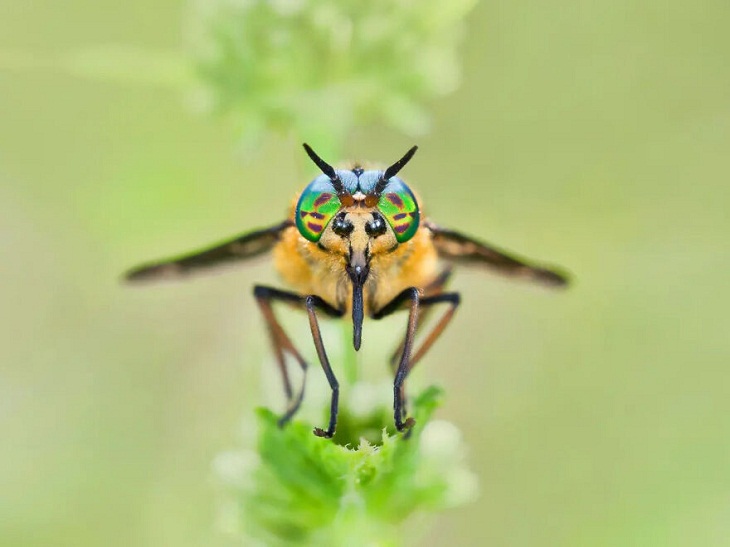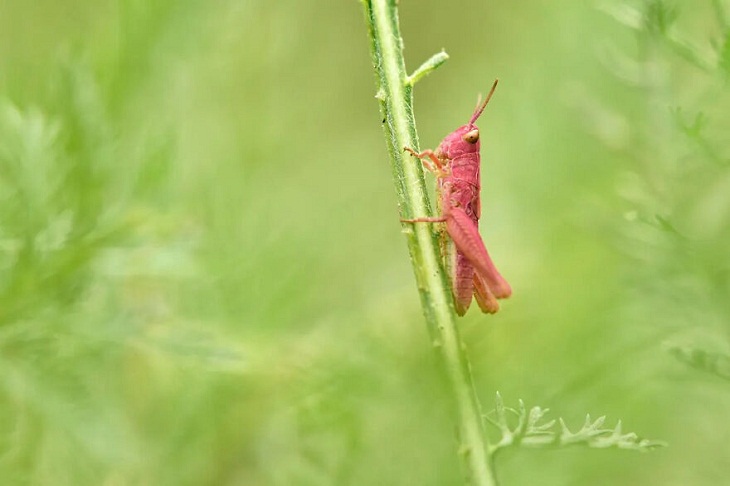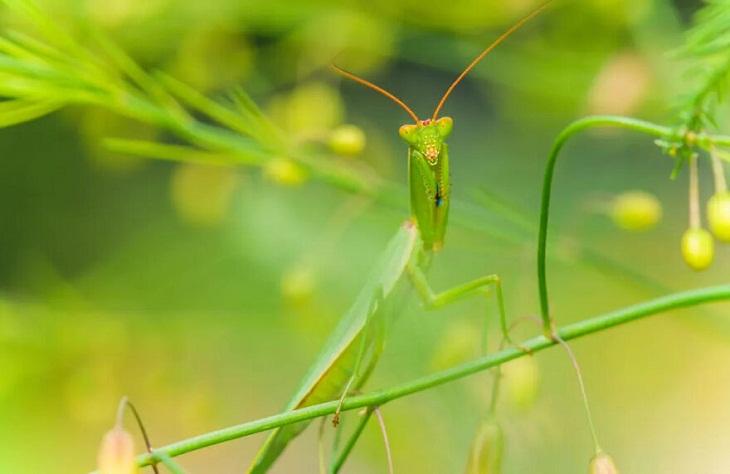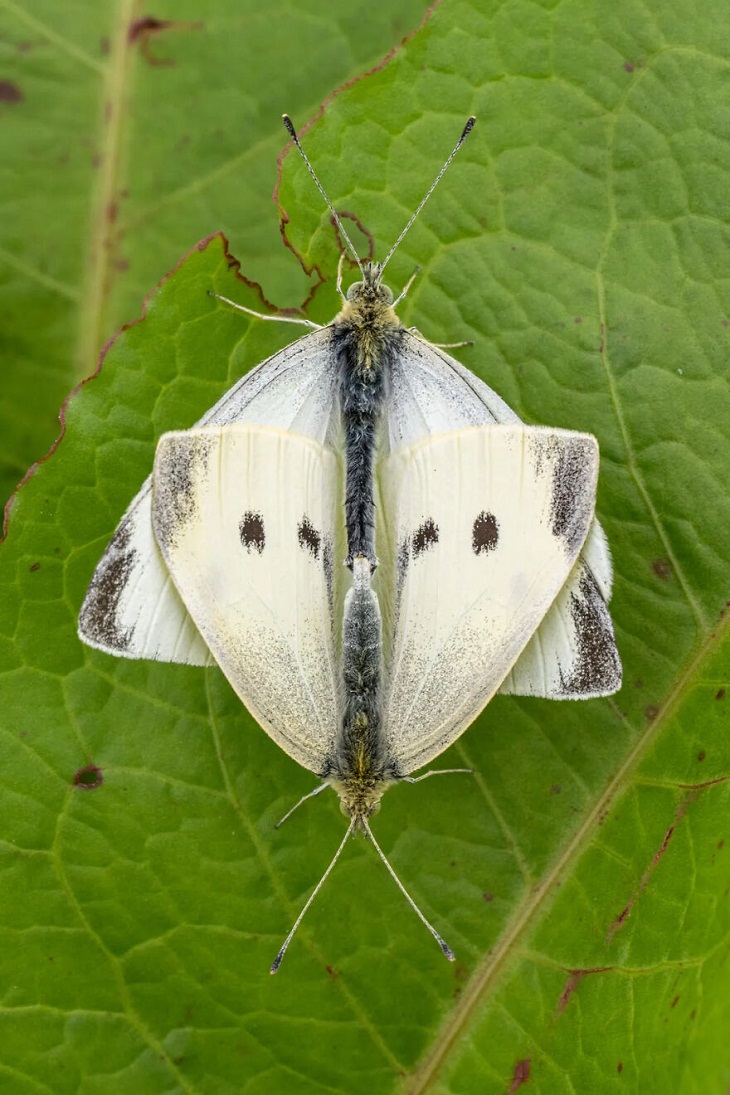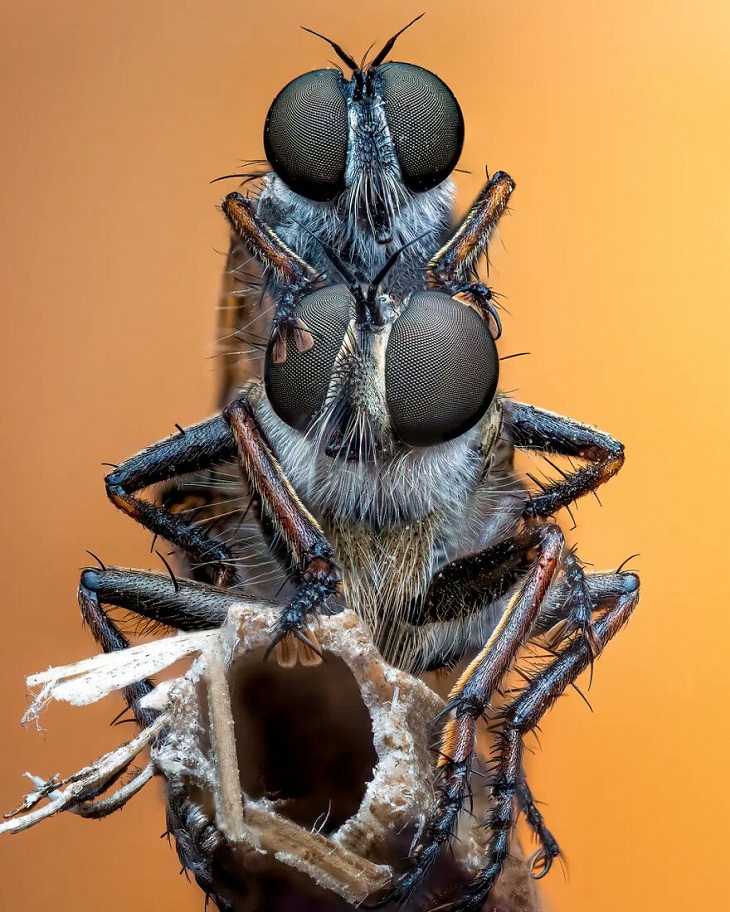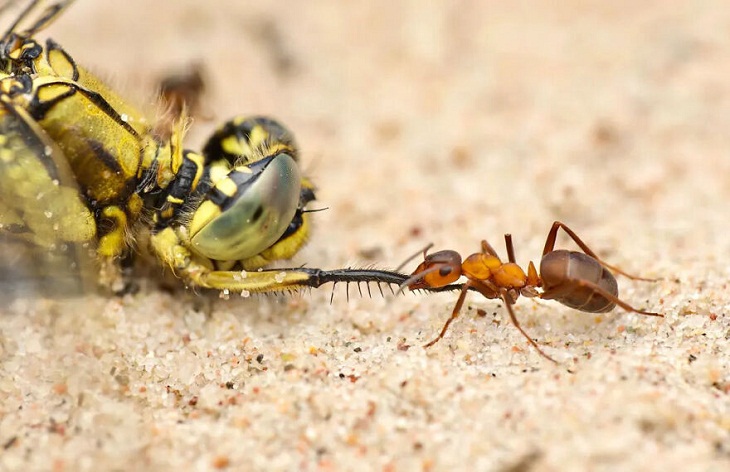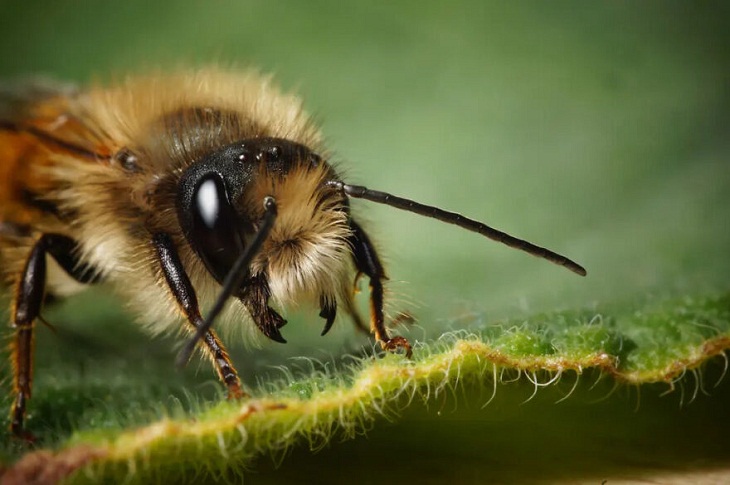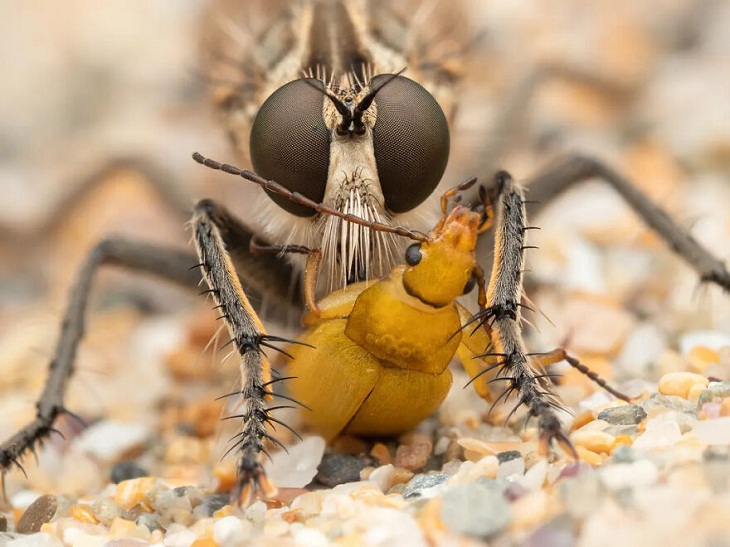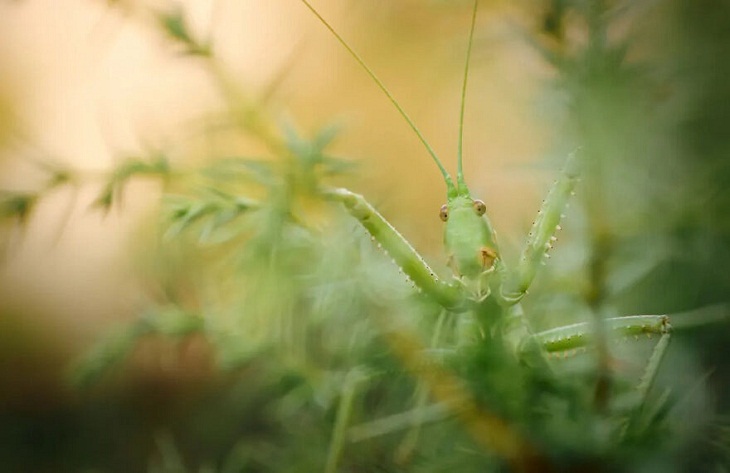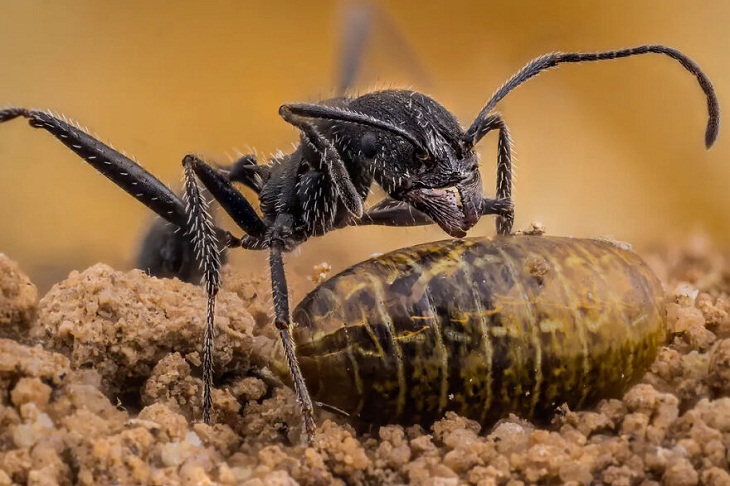Characterized by its metallic green appearance, the spotted tiger beetle (Cicindela sexguttata) is a native North American species. During adulthood, these beetles showcase their proficiency as predators, owing to their well-developed mandibles.
2. Photograph by Marc Brouwer
The wing-beat frequency of a hummingbird hawk moth (Macroglossum stellatarum) is approximately 75 times per second, much like that of a small hummingbird.
3. Photograph by Sarah Perkins
Basking in the glow of the afternoon sun, a male orange tip butterfly (Anthocharis cardamines) reveals its striking features. Notably, only the upper forewing of the male showcases the vibrant orange tip.
4. Photograph by Gustav Parenmark
A blue-tailed damselfly (Ischnura elegans), recognized for its blue tail, is a species of damselfly that inhabits serene or slowly moving water bodies. The early stages of its life cycle are spent in the water as aquatic larvae.
5. Photograph by Rory Lewis
The Andrena cineraria, commonly known as the ashy mining bee, on an aged dandelion flower. This unique bee species emerges early in spring and exhibits solitary behavior, with female bees excavating burrows in the ground to build nests. These nests result in a mound of soil near the entrance, and despite being solitary bees, multiple nests can be found in close proximity within a limited space.
6. Photograph by Raymond J Canno
The Bombus terrestris, a prevalent species of bumble bee distributed across Europe, serves as an exceptional pollinator and is actively bred for commercial purposes to improve crop pollination.
7. Photograph by Panagiotis Dalagiorgos
A European mantis (Mantis religiosa) is seen alongside a mushroom, beautifully illuminated from behind. The mantis's distinct eyes, positioned at a distance, allow it to perceive depth, crucial for capturing prey with precision. Notably, female mantids are known for their cannibalistic behavior, frequently devouring males at various stages of the mating process.
8. Photograph by Dennis Teichert
After a rainstorm, the photographer stumbled upon a stunning antlion (Euroleon nostras) one evening. These remarkable creatures construct cone-shaped depressions in soft, sandy soil, hiding themselves at the base. They survive by preying on tiny arthropods that unwittingly fall into their cleverly designed traps.
9. Photograph by Benjamin Salb
A small damselfly (Ischnura posita), which is native to North America.
10. Photograph by Bailey Carswell-Morris
The male of the banded demoiselle (Calopteryx splendens) exhibits even more vivid colors.
11. Photograph by Marc Brouwer
Similar to mosquitoes, the adult female twin-lobed deerfly (Chrysops relictus) needs a blood meal from cattle, horses, or deer to develop eggs. Male deerflies, meanwhile, are often observed on flowers as they indulge in nectar.
12. Photograph by Beverley Brouwer
Meadow grasshoppers (Pseudochorthippus parallelus) exhibit an interesting genetic mutation called erythrism. This condition leads to a reddish discoloration, resulting in a variety of colors ranging from greens, browns, and yellows to blacks and even pink or purple. Among these hues, the pink-purple variation is relatively uncommon and is primarily observed in female individuals.
13. Photograph by Panagiotis Dalagiorgos
A low-angle shot of a Saga hellenica, a species of large predatory bush-cricket that sustains itself by preying on fellow insects.
14. Photograph by Jamie Smart
During their relatively short life span of 2-3 weeks, male and female moths have an average of three mating encounters.
15. Photograph by Pete Burford
1st place in the Insect Week photography competition: a pair of mating golden-tabbed robber flies (Eutolmus rufibarbis).
16. Photograph by Gustav Parenmark
Although red wood ants (Formica rufa) primarily consume sugary aphid honeydew, they also exhibit predatory behavior, occasionally requiring assistance to capture larger prey.
17. Photograph by Will Scarratt
When searching for suitable sites, female red mason bees (Osmia bicornis) discover existing cavities where they construct mud-lined cells. These cells are prepared by stocking them with pollen and nectar before the female bee deposits an egg and seals the cell.
18. Photograph by Jamie Spensley
Feasting on a sulphur beetle (Cteniopus sulphureus), the dune robber fly (Philonicus albiceps) demonstrates its predatory prowess. Known for its robust hunting abilities, this fly lurks in ambush, targeting insects in mid-flight. Interestingly, the sulphur beetle, much like its predator, thrives in coastal areas.
19. Photograph by Rosa Dunbar
In New Zealand, there are only two mantid species, and the New Zealand praying mantis (Orthodera novaezealandiae) stands out as the sole native species.
20. Photograph by Ángel Plata
A species of ant known as Aphaenogaster iberica preys on pupae of fruit flies found in the soil of a citrus orchard. While primarily native to the Iberian Peninsula, this ant species has also established a presence in Morocco.

